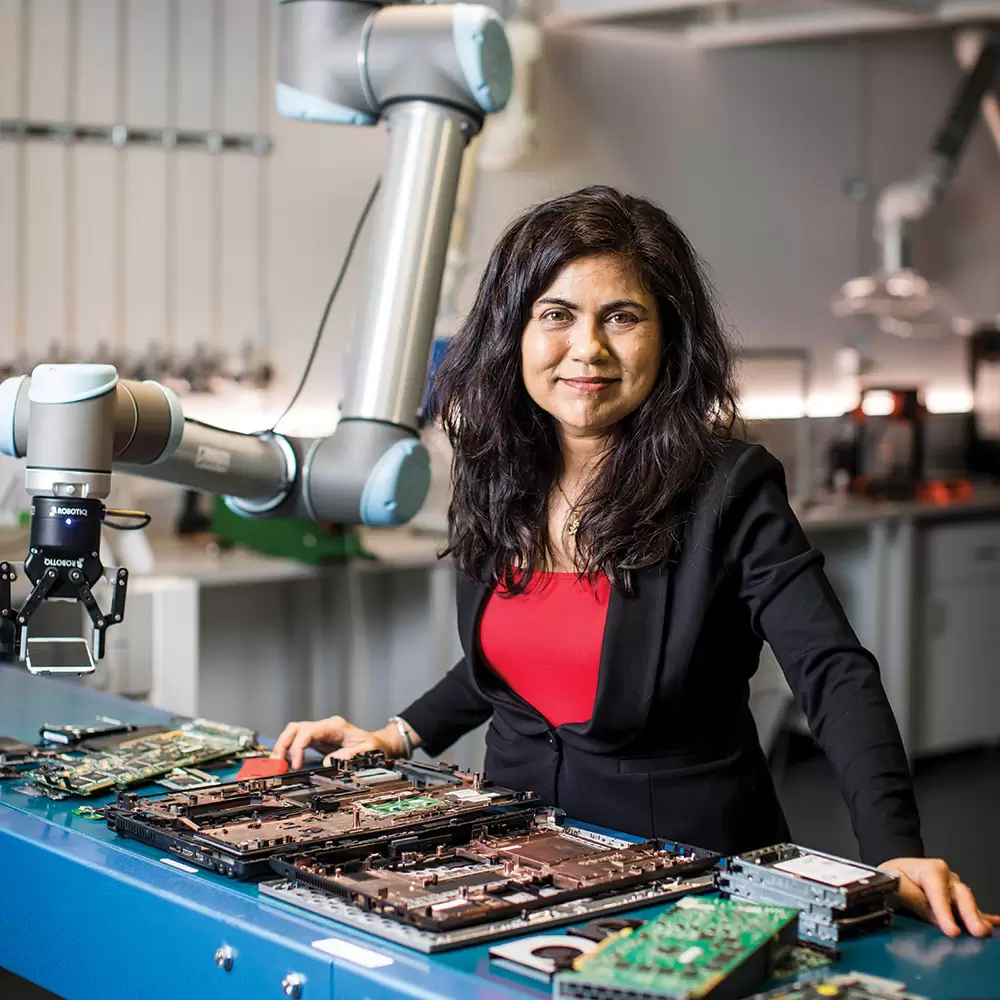The first World Engineering Day for Sustainable Development was held 4 March 2020. To celebrate, we asked members of the profession how engineers can contribute to each of the 17 UN Sustainable Development Goals.
GOAL 12: RESPONSIBLE CONSUMPTION AND PRODUCTION
Engineers are using their skills to reduce waste, reuse more materials, recycle things that have reached the end of their usable life and repurpose where possible.
The global material footprint is rapidly growing, outpacing population and economic growth.
 According to the United Nations, should the global population reach 9.6 billion by 2050, the equivalent of almost three planets could be required to provide the natural resources needed to sustain current lifestyles.
According to the United Nations, should the global population reach 9.6 billion by 2050, the equivalent of almost three planets could be required to provide the natural resources needed to sustain current lifestyles.
Sustainable consumption and production aims at “doing more and better with less, which means getting smarter about how we use resources like food, water, energy, textiles and minerals.
Thankfully, engineers like Professor Veena Sahajwalla are on the job and exploring ways to reduce, reuse, recycle and repurpose.
Small moves, big impact
Scientia Professor Veena Sahajwalla, an ARC Laureate Fellow and Engineers Australia Honorary Fellow, is using the science of micro-recycling to show that everything that exists in a physical form has worth.
Sahajwalla is the founder and Director of SMaRT@UNSW, the Centre for Sustainable Materials Research and Technology.
It works with industry, both local and global, as well as governments of all levels, global research partners and not-for-profits to develop innovative solutions for what it describes as one of “the world’s biggest waste challenges”.
Sahajwalla said micro-recycling recognises that complex products like laptops or phones contain a number of recoverable materials.
“The science we are developing, called micro-recycling science, is to reveal what happens at the micro level and below when materials react with each other,” Sahajwalla said.
“It’s not just about the metals, it’s not just about glass or plastics, it’s about every individual material and every component and every part that is so intricately connected that needs to be recognised and reformed into high value outputs.
“If we look at the example of a magnet that contains a rare earth element like neodymium, how do we isolate that element in order to recycle it?
“That comes back to understanding micro-recycling science. If somebody gave me a brand-new machine that can crush these magnets down to a fine powder, that is not going to help me. But the science will show us a way.”
Micro scale
It’s important that the factories are ‘micro’, Sahajwalla said, because traditional factories have always been about sourcing raw materials on a grand scale, having a large production capacity and making products cheaper as a result of economies of scale.
But micro-factories can produce higher value materials in smaller quantities and can be established in areas of demand to satisfy local needs first, then export to the world as expertise increases, thereby developing a new concept of ‘economies of purpose’.
“In a place like Australia, where there are large distances to cover, the economics of centralised manufacturing simply do not work out,” Sahajwalla said.
“A distributed form of manufacturing makes much better sense.”
As well as metal extraction, Sahajwalla is working on a new iteration of microfactory that recycles glass as panels for use in building interiors. She is also excited about the opportunity to turn old clothing into building materials.
Sahajwalla’s vision for the future is for Australia to become a model to the rest of the world, boasting industries that are fuelled by their own waste as a result of smart science and cutting-edge engineering.
The world has changed dramatically since Veena Sahajwalla spoke at WEC in November 2019. Join us online on 18–20 November as we bring back WEC keynotes to discuss how the world and the engineering landscape has altered and what the future has in store. Register now for the World Engineers Symposium.




